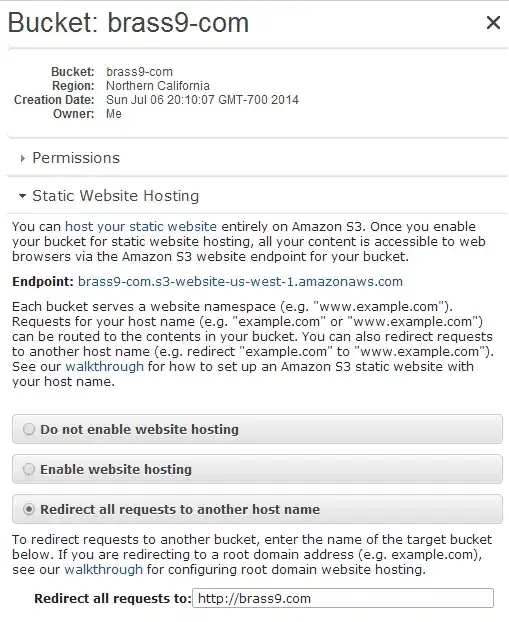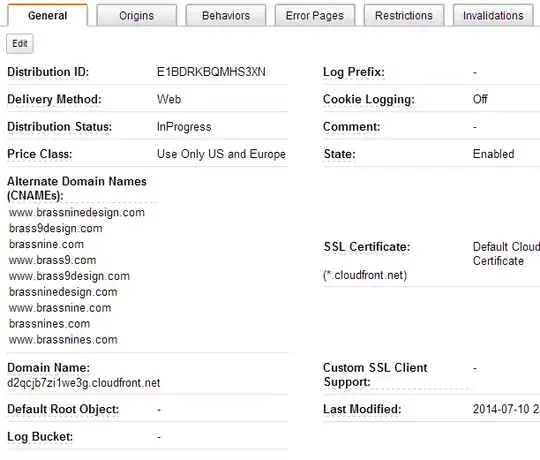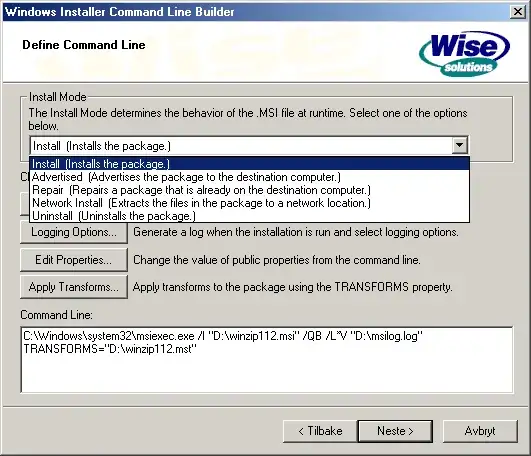I'm trying to do something that should be relatively straight-forward - I want to setup a few domains and subdomains to redirect to the core domain for our site, but I want to put the redirects out on Cloudfront. Everything works except redirecting the root path - that gets me an XML file partly-describing the S3 bucket.
Background
S3
S3 allows you to setup an all-redirect bucket, like:

Testing this, the web endpoint (brass9-com.s3-website-us-west-1.amazonaws.com) does what it should - it redirects to brass9.com. Good.
Cloudfront
Cloudfront lets you point at an S3 bucket, but the way it suggests you do so is wrong - instead of pointing at the bucket by its name, like brass9-com.s3.amazonaws.com, you need to use the Web Endpoint above. Other than that you can leave everything at its defaults and get good redirect behavior. So, a path like www.brass9.com/portfolio properly redirects to where it should. Also good.
The problem - the root domain redirect
The one thing that then fails to work is redirecting from plain www.brass9.com. Instead of getting you a redirect it gets you this odd result:
<?xml version="1.0" encoding="UTF-8"?>
<ListBucketResult xmlns="http://s3.amazonaws.com/doc/2006-03-01/">
<Name>brass9-com</Name><Prefix></Prefix>
<Marker></Marker><MaxKeys>1000</MaxKeys><IsTruncated>false</IsTruncated>
</ListBucketResult>
OK... . So this is not completely unexpected - because there's no Default Root Object. But what Default Root Object would I possibly specify to prevent this behavior? What is the name of the S3 redirect object, if any, that I need to point to? Or is there some other proper config, or is this just a bug in how Cloudfront and S3 interact that Amazon needs to fix?
Known Not-Working Solution: Default Root Object
It is possible to specify a Default Root Object of index.html, but it doesn't help any - it just changes the problem. The Cloudfront url instead redirects to /index.html on the main site, which is a 404 (we don't use an index.html file, it's a server-side framework driven site). I could put an index.html on the server, but that defeats the small speed gain of using Cloudfront in the first place.
Similar questions
One question asks something similar but gets back a blank, 0-byte response for some reason instead of what I'm seeing, an XML response. It doesn't include a question about that problem or a resolution.
Related articles
One article proposes you just serve the entire site out on both the bare and www domain. This screws with any user's bookmarks, your search ranking, etc, etc. You should not do this.
Several discuss hosting a static website on S3 and Cloudfront rather than a redirect scheme, and so are unrelated.
So, how do I do this properly?
Screenshot of Cloudfront Configuration - no Default Root Object, pointing at S3 origin. Ignore the InProgress - I had just toggled Default Root Object on and off to test.

And the Origin config for that Distribution:
